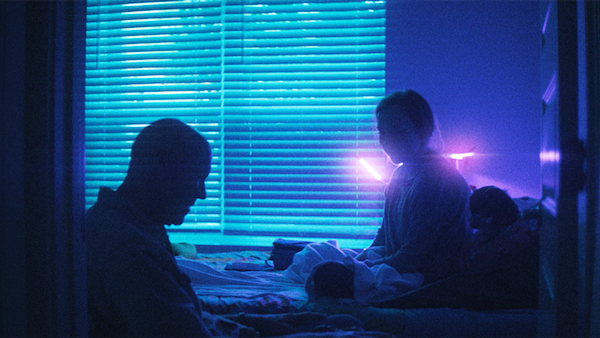Movie review by Greg Carlson
Documentarian Lance Oppenheim’s “Spermworld” boasts a killer hook to attract the curious: unregulated sperm donors who use social media to offer services to women unhappy with the options provided by traditional “banks.” The filmmaker’s latest feature was inspired by the 2021 “New York Times” article by Nellie Bowles titled “The Sperm Kings Have a Problem: Too Much Demand.” Using a range of techniques that often mirror the way dramatic scenes in fiction films are constructed and cut, Oppenheim introduces viewers to a colorful gallery of characters who, to paraphrase the famous sentiment from Jean Renoir, have their own reasons.
While the first scene in the movie shows a couple preparing to engage in N.I. (natural insemination) through sexual intercourse, the majority of the film’s subjects practice the “artificial” variety requiring fresh and “unquarantined” semen collected in a cup. “Spermworld” is never particularly graphic, but the movie includes several instances in which sperm donors withdraw to the privacy of a bathroom to prepare a specimen, frequently with the aid of stimulating pornography. Oppenheim definitely alludes to the possibility that a selection of men, regardless of the method used, receive some kind of erotically charged pleasure from the transaction.
“Spermworld” tracks a principal trio of donors. Tyree Kelly accepts money for his sperm even as he and his own partner, Atasha Pena Clay, unsuccessfully try to conceive. Mathematics lecturer Ari Nagel, to the great dismay of his mother, lays claim to more than 135 children (and counting). Steve Walker, a lonely sexagenarian relatively new to the donation community, bonds with Rachel Stanley, a young woman seeking to become a mother despite the increasing challenges of her cystic fibrosis. Their stories unfold with a strong sense of cinematic flair that purists may find blurry, as lighting, color and composition combine in artful and stylized mise en scene.
While some detractors have claimed that Oppenheim’s narrative approach negatively criticizes the participants – or at least implies some kind of moral superiority – the director paints complex portraits of people whose desire and willingness to do something outside the gates of typical social convention raise questions for those viewers who might never consider, or need to consider, such a path. Oppenheim has spoken on the record that he tries “to not express any kind of judgment.” The result raises many unanswered questions that some watchers will tolerate. Others may be left wanting information the director is not willing to include.
One of the big themes that looms large and lingers in one’s mind long after the end credits roll is the thin line between altruism and a more self-centered worldview held by donors. As producer Kathleen Lingo said to Nicole Karlis in “Salon,” “One of the things I find so fascinating about this story is the women taking a thing that’s always been mediated through culture, through law, through society — which is who can impregnate them — and taking matters into their own hands. On one side that’s very freeing and empowering, but on the other side, when you decide to go outside the system, there are no rules.” In this sense, “Spermworld” is a worthwhile starting point for a larger and deeper conversation.
